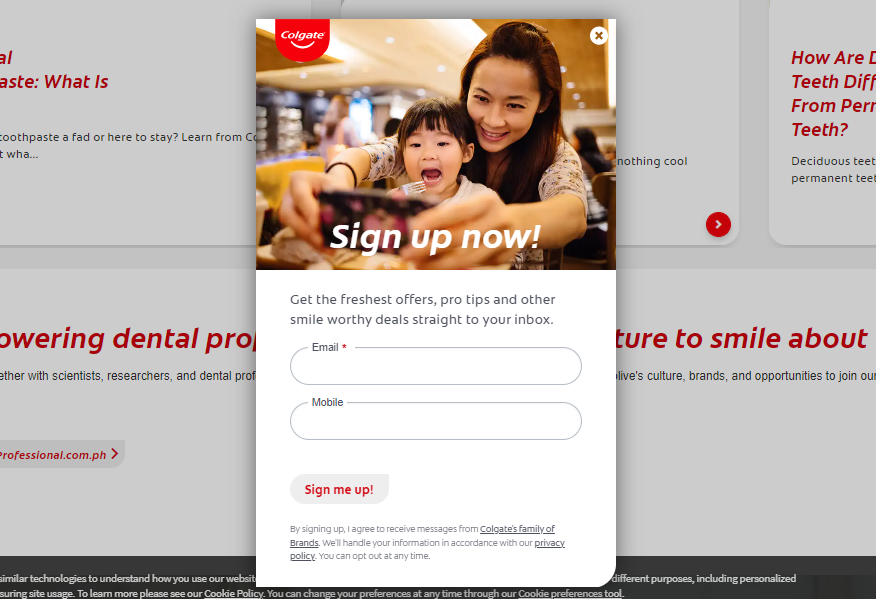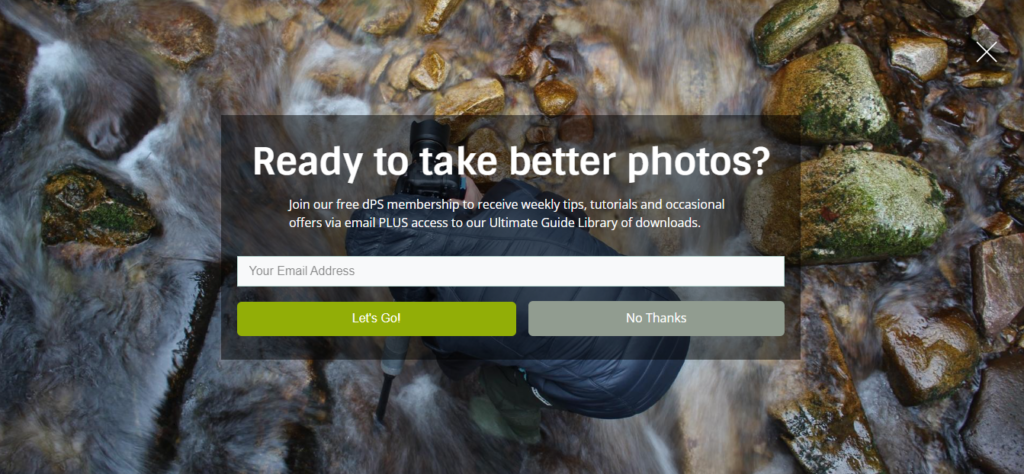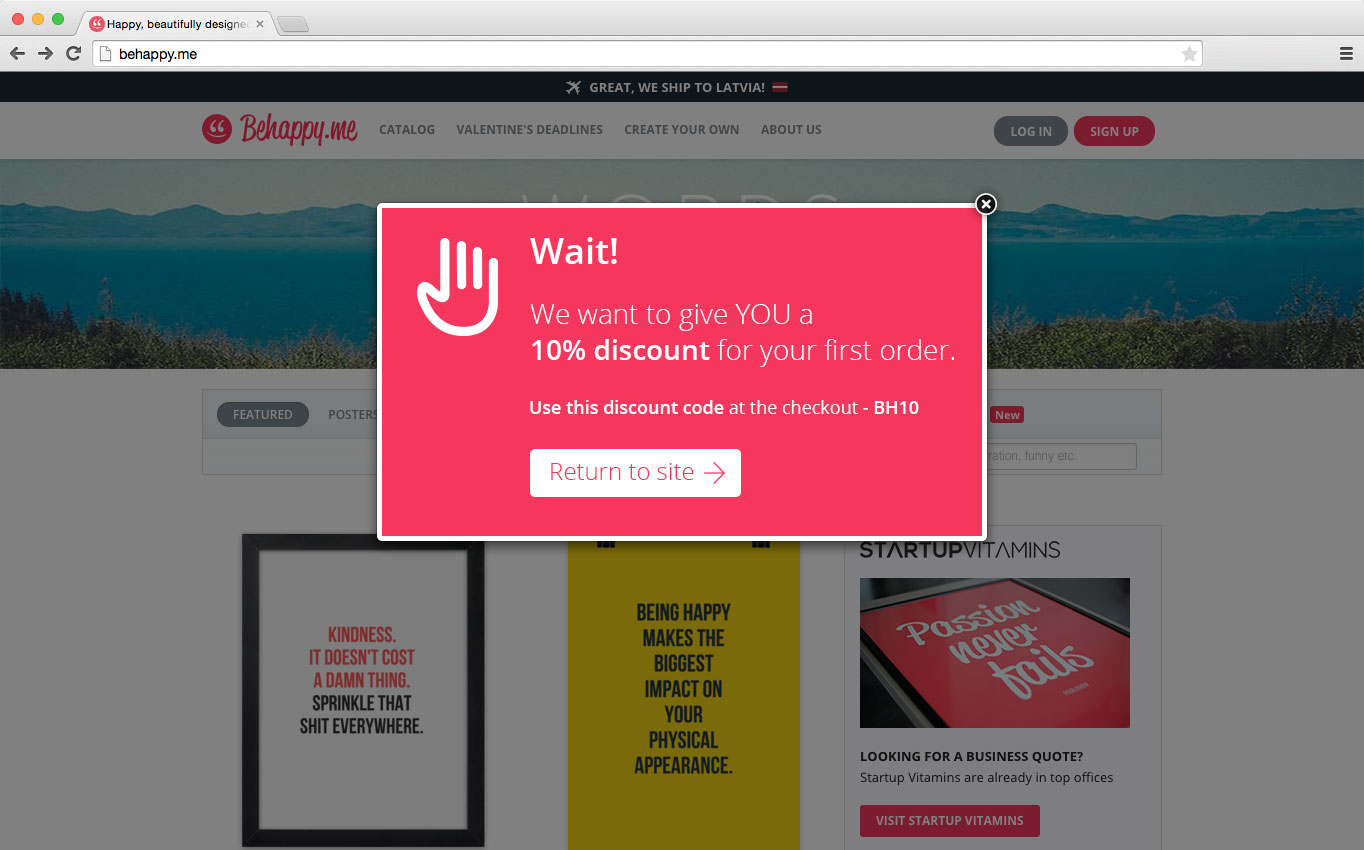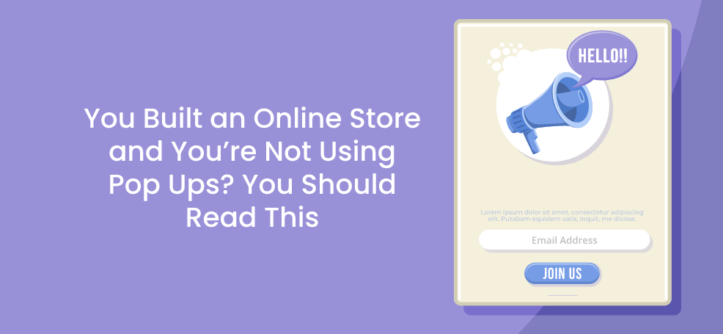The number of challenges facing the business owner managing an internet store is endless. Every advantage available to the business owner may bring him the edge to make the store more profitable.
Pop ups have become, in the last years, a powerful marketing tool to grow e-mail lists, increase leads, sales, and every other indicator in the area of electronic commerce.
How can you add your website to the list of brand names which use pop-ups successfully?
This post will find seven helpful tips to help you use pop-ups and turn your website into a well-oiled sales machine!
Who hasn’t encountered pop-ups during their daily online surfing? The most renowned brand names in the world use pop-ups on their websites.
You will find leading names in the list of companies such as Pampers, Sony, H&M, IKEA, L’Oréal, AT&T, Amazon, Walmart, Victoria’s Secret, and many more. In fact, according to the website Conversific.com, about 30% of the 1,000 largest e-commerce sites in the United States use pop ups.
No doubt, using popups is one of the most powerful tools in our toolbox. Pop ups enable us to convert the traffic on our website almost without effort. Yet, when it comes to mind, pop-up carries a negative connotation for regular internet users.
Why does that happen?
Popup as an additional layer on the Website
We must make the distinction between the types of existing pop-ups.
The type of pop-up known as the most annoying is the one that opens as a new browser window with a promotional message that is not related to the site itself or to its content. This type of pop-up would mostly be blocked by advertisement blockers like AdBlock and some leading browsers.
In this post, we will not discuss this type, but only the type of pop-up which opens up a box within the website by using JavaScript code, for example:

Even Google, in its guidelines, distinguishes between a pop-up that opens as a new window and its purpose is advertising, unrelated to the website’s content, and a pop-up that exists as an added layer within the website page.
Also, by using the legitimate type of pop-ups, we see many occasions when users complain that their user experience is hurt. What are the reasons for that? We identified a few main reasons:
- Pop-ups display immediately without any context and distinction – when the user encounters a pop up before they can explore the content, they might feel that their user experience is hurt. There are cases where a popup displaying immediately may be beneficial (for example, in some instances, of signing up for a newsletter).
- The wrong message at the wrong time – a pop-up offering the user technical support when they visit your pricing page may gain little response. Since the visitor showed interest in prices, there is no reason to communicate about technical support. It is essential that the message conveyed to the visitor is the right message at the right time.
- High frequency – a website that displays pop-ups too often (for example, every 5 minutes) is bound to annoy its visitors.
Why do pop ups manage to create a significant increase in conversion rates? Two case studies
Before we understand the main reasons why pop-ups can create a vast improvement in conversion rates, we will review two different success cases in which website owners used pop-ups:
- Nikki McGonigal is a craftswoman and a blogger who operates an Etsy online store called Nikki In Stitches. Nikki’s secondary goal on the website was to increase her e-mail list. Nikki’s website had a side box inviting people to subscribe to her newsletter.
The box brought in an average conversion rate of 0.4%. Nikki decided to implement a type of pop-up called LightBox on her site, which would have the same functionality, encouraging people to join the newsletter.
The pop-up gained a conversion rate of 5.5%!! That is, the pop-up grew 1375% compared to the side box (in practice, Nikki reached thousands of additional users who subscribed to her newsletter). - Darren Rowse is a professional photographer who operates a blog on the subject of photography. Darren has gained 40 new subscribers for his daily newsletter; he was not complaining about the number of subscribers but looked for ways to increase his e-mail list.
Darren, an internet marketing enthusiast, decided to implement pop-ups on his website (using a rather basic design…). Thanks to the pop-up, which offered visitors regular updates about blog posts, Darren managed to increase the number of his newsletter subscribers to 350 per day, an increase of 875%!

When analyzing the great success achieved by pop-ups, we find some essential elements relevant every time a pop-up is displayed successfully and produces high-quality conversion.
The primary reason for success is that most pop-ups demand the user’s full attention at a given moment. The pop up forces the user to close the pop-up or perform the action (like subscribing to the newsletter, leaving a lead, making a purchase, or others).
This is also why pop ups may be perceived as annoying in cases where the timing and the message are not right. Likewise, pop-ups that do not demand full attention, such as pop-ups on a top or a sidebar, gain similar success because they remain in the background without disturbing the visitor.
The facts speak for themselves; marketers of e-commerce websites invest a lot of resources in bringing traffic to the site, but as soon as a visitor leaves the website, we lose the value of that visitor. Think of a hot air balloon that is filled non-stop with hot air. If we leave holes in the balloon, we will see how the balloon slowly loses altitude.
The air, in this case, is the traffic on the website, and using pop-ups is one of the tools to close the holes in the balloon by re-engaging the users who are already on the website anyhow (additional tools include mailing, re-marketing, and more).
The purpose of the pop-up is to strengthen the relationship with the visitor, who has become more sophisticated and has greater expectations of his surfing experience in your online store.
Visitors expect you to surprise them with exceptional personal attention, and a sophisticated pop-up display with accurate timing will achieve this goal.
7 Sophisticated Uses of Pop-ups on your Online Store
Common to all the uses I will present to you shortly is that they integrate two critical elements for a successful pop-up: accurate timing and the right message (micro-copy at the right time and place will do wonders). Correct use of the tools I will present to you will help you communicate better with your customers and, as a result, will boost your store’s profit.
1. Fighting Cart Abandoners
Reducing churn rate on the site: one of the significant problems in e-commerce, no matter what niche your online store operates, is users who place products in a shopping cart but do not carry on to the payment stage.
These users are called in the professional jargon “cart abandoners,” and every marketer always looks for solutions to help reduce the rate of cart abandonment. Luckily, exit intent pop-ups are a great solution to the problem.
By combining a pop up activated when leaving the window and implemented only in the shopping cart, you can approach those who try to abandon the cart at the right time and offer them a solution for the problem.
Many of those leaving their carts do so because of delivery prices – you can use the opportunity to provide a discount coupon on shipping.

2. Hot the Press Updates on your New Products or Deals
You launched a new product, and you wish to update all your relevant users about the launch. One of the best ways to update your users (besides updating your e-mail list) is by using a pop-up.
You can edit users who belong to a specific category on your online store or all of the users. Do you have a new special deal? Your visitors should know about it!
3. Buy Now! – create a feeling of urgency with pop-ups with a limited time for action
You probably know the sales of Cyber Monday, Black Friday, or other sales events that limit the time for action to a specific period. It turns out that our mind works differently when there is a deadline on the agenda.
Creating a feeling of urgency makes us exploit opportunities and make decisions faster. You can use this conditioning by presenting special deals with a deadline of a few hours/days for realization. Users, who realize they have a one-off opportunity, would be much more prepared for conversion.
4. Recommend relevant products to your customers
Pop-ups are an excellent platform to recommend to the visitor relevant products. Visitors on a particular page may be interested in other products, so why not tell them about them? As long as your product recommendations are relevant, the users will appreciate them and reward you by increasing your sales share.

5. A Second Chance to make a First Impression – Grow your E-Mail List
Know the saying “you’ll never get a second chance to make a first impression”? By using pop-ups wisely, you can approach your users again and interest them with something special you have to offer.
Most times, after visitors leave your website without buying a product, they will not think about you anymore unless they run into you again. The most common use of pop-ups today is for adding the user to your e-mail list.
Once a user gives you their e-mail address, you can e-mail them to keep the relationship alive. You could also add the user directly into your CRM system.
6. Targeting the Marketing Message according to the Advertising Channel
What if you could present a different marketing message to your target audience according to the source of its traffic or the level of interest in specific products? Now it is possible and straightforward to do!
By smart targeting, you can offer visitors arriving from Google a specific message and visitors coming from Facebook a different statement.
You can also do more innovative segmentation and present a specific message to visitors arriving from a particular website – you can give a unique benefit to the visitors of that site and strengthen your collaboration with them.
Using segmentation according to the traffic source can help you get the most accurate and correct message for any user individually.
7. Speak with your Customers
Your visitors expect to get personal attention; the age of substantial faceless brands is over; your visitors want to know who is behind the brand name.
Most likely, your visitors have many objections regarding your online store.
Think about it this way: you are asking your visitors to trust you by entering their credit card numbers and ensuring that the product will reach them as promised on the site. Displaying a pop-up for technical support or for a virtual chat at the right time will help your visitors talk to a person and get a complete response to all the objections that prevent them from making a purchase.
Summary
Pop-ups have become widely used over the last years, and e-commerce websites that understood the potential of using pop-ups correctly managed to increase conversion rates significantly. Don’t be afraid to be creative. The right message at the right time can do wonders.
Pop-ups are a great way to convey your message to the visitors; use them to offer something relevant according to the visitor’s type and behavior on the site. After you enter the loop, use A/B TESTING to find the phrases, suggestions, and best timing for a winning conversion rate.
Want to create your pop ups? Sign up to Poptin for free!





